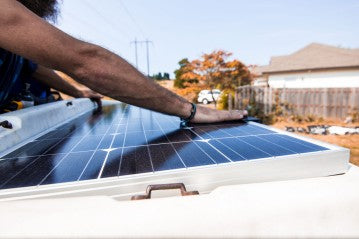
A solar charge controller plays a critical role in a solar power system by regulating the flow of electricity from the solar panels to the battery bank. Proper installation of the solar charge controller is crucial for the optimal performance of the solar power system. In this blog post, we will explore the factors to consider when installing a solar charge controller, the best locations to install it, and the importance of professional installation.
Factors to Consider for Installing Solar Charge Controller
Several factors need to be considered when installing a solar charge controller, including climate, sunlight exposure, and cable length.
1. Climate: The climate of the installation location can impact the performance of the solar charge controller. Extreme temperatures, high humidity, and corrosive environments can all affect the lifespan of the controller.
2. Sunlight Exposure: The installation location should have adequate sunlight exposure to ensure the solar panels can generate enough power to charge the battery bank. The solar charge controller should be installed in a location that receives direct sunlight for most of the day.
3. Cable Length: The length of the cable between the solar charge controller and the battery bank should be considered when deciding on the installation location. Longer cables can result in voltage drop, which can reduce the efficiency of the solar power system.
Best Locations to Install Solar Charge Controller
The solar charge controller can be installed indoors or outdoors, depending on the specific requirements of the solar power system. Here are some of the best locations to install a solar charge controller:
1. Indoor vs Outdoor: Indoor installation provides protection from the weather and a controlled environment, ensuring optimal performance. Outdoor installation can be beneficial for larger solar power systems, where space is limited.
2. Inverter Room: The inverter room can be a good location for installing the solar charge controller since it's typically the central location for the solar power system. This location also ensures that the solar charge controller is close to the inverter, reducing cable length and the risk of voltage drop.
3. Battery Room: The battery room can also be a good location for installing the solar charge controller since it ensures that the controller is close to the battery bank. This reduces cable length and the risk of voltage drop while providing protection from the weather.
Importance of Professional Installation
Professional installation of the solar charge controller ensures that it's installed correctly, and all safety precautions are taken. A professional installer can also provide advice on the best location for the solar charge controller, based on the specific requirements of the solar power system. Professional installation ensures that the solar power system operates at its best and provides you with significant benefits for years to come.
Conclusion
Proper installation of the solar charge controller is crucial for the optimal performance of a solar power system. Factors such as climate, sunlight exposure, and cable length should be considered when deciding on the installation location. The inverter room or battery room can be good locations for installing the solar charge controller, depending on the specific requirements of the solar power system. Professional installation ensures that the solar power system operates at its best and provides you with significant benefits for years to come. If you're unsure about the appropriate location for your specific solar power system, consult with a professional solar installer or engineer for advice.

0 comments